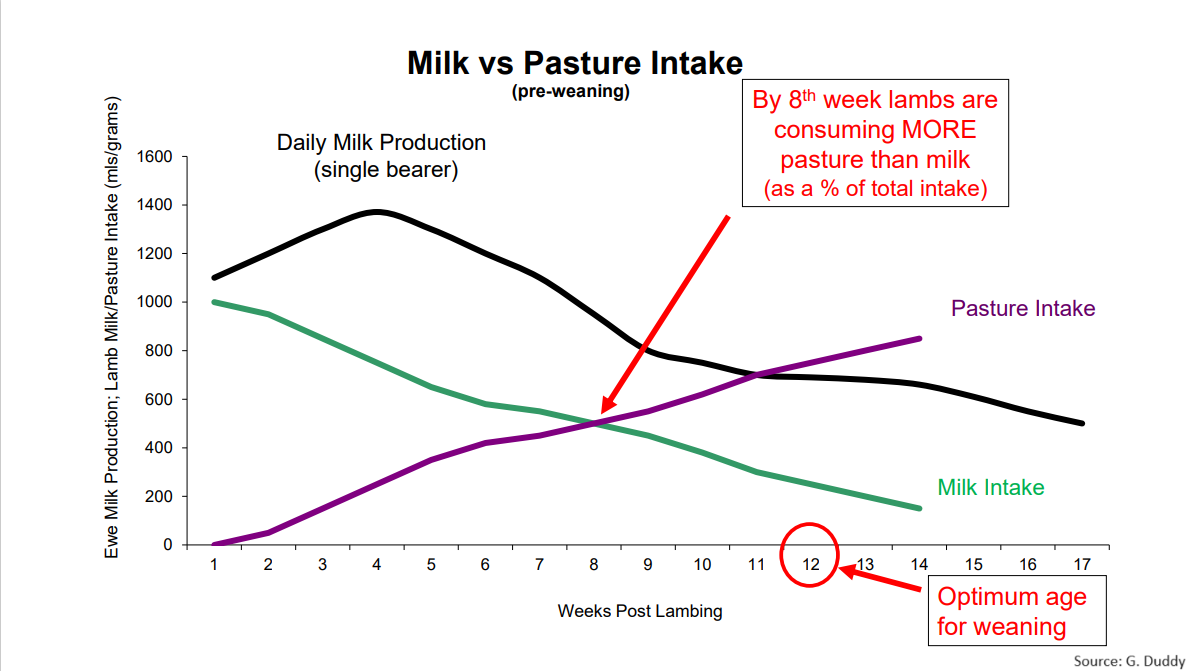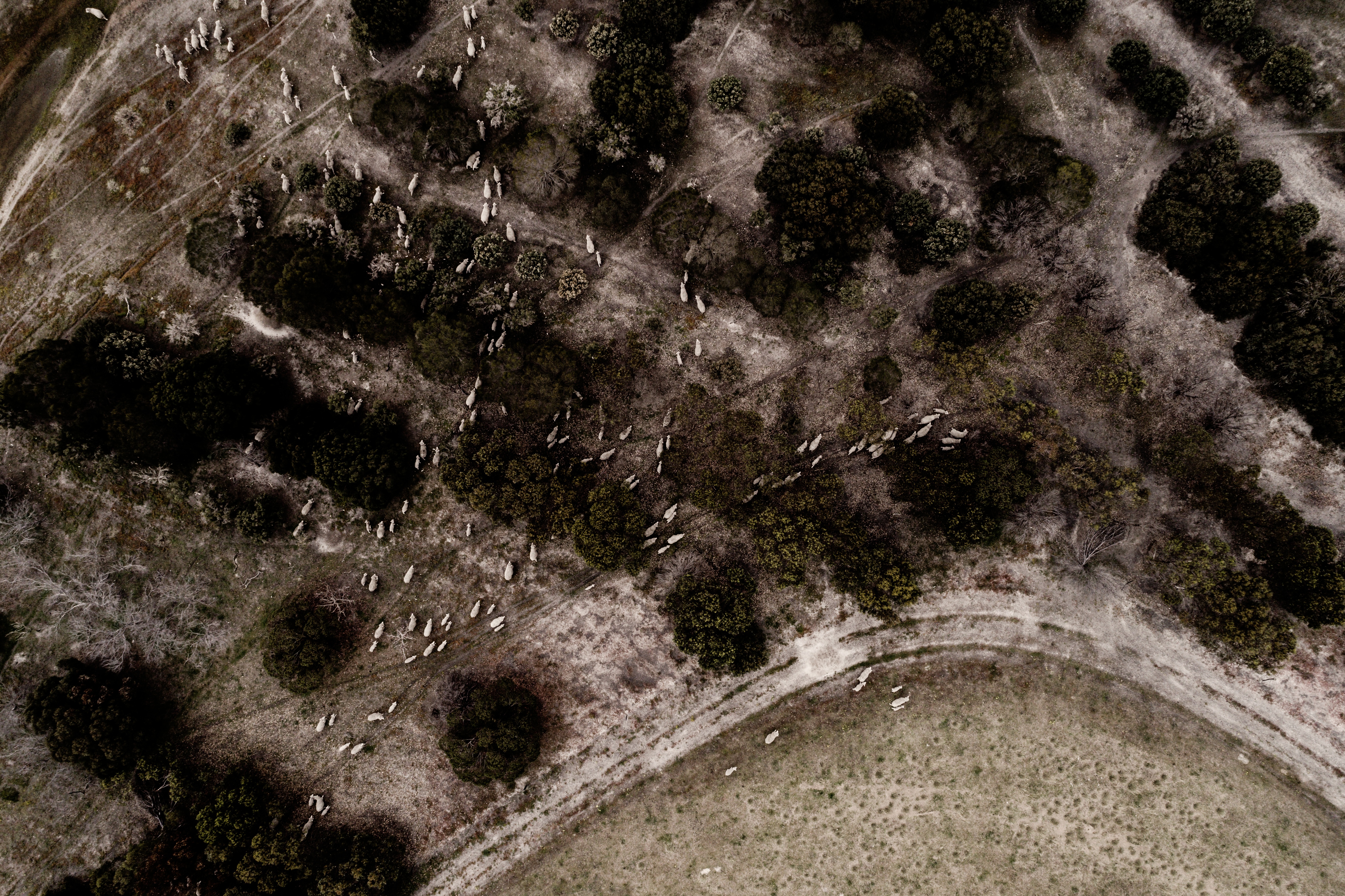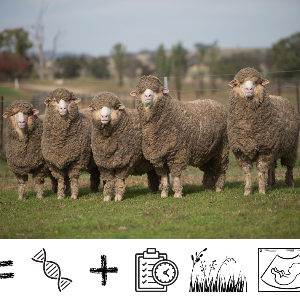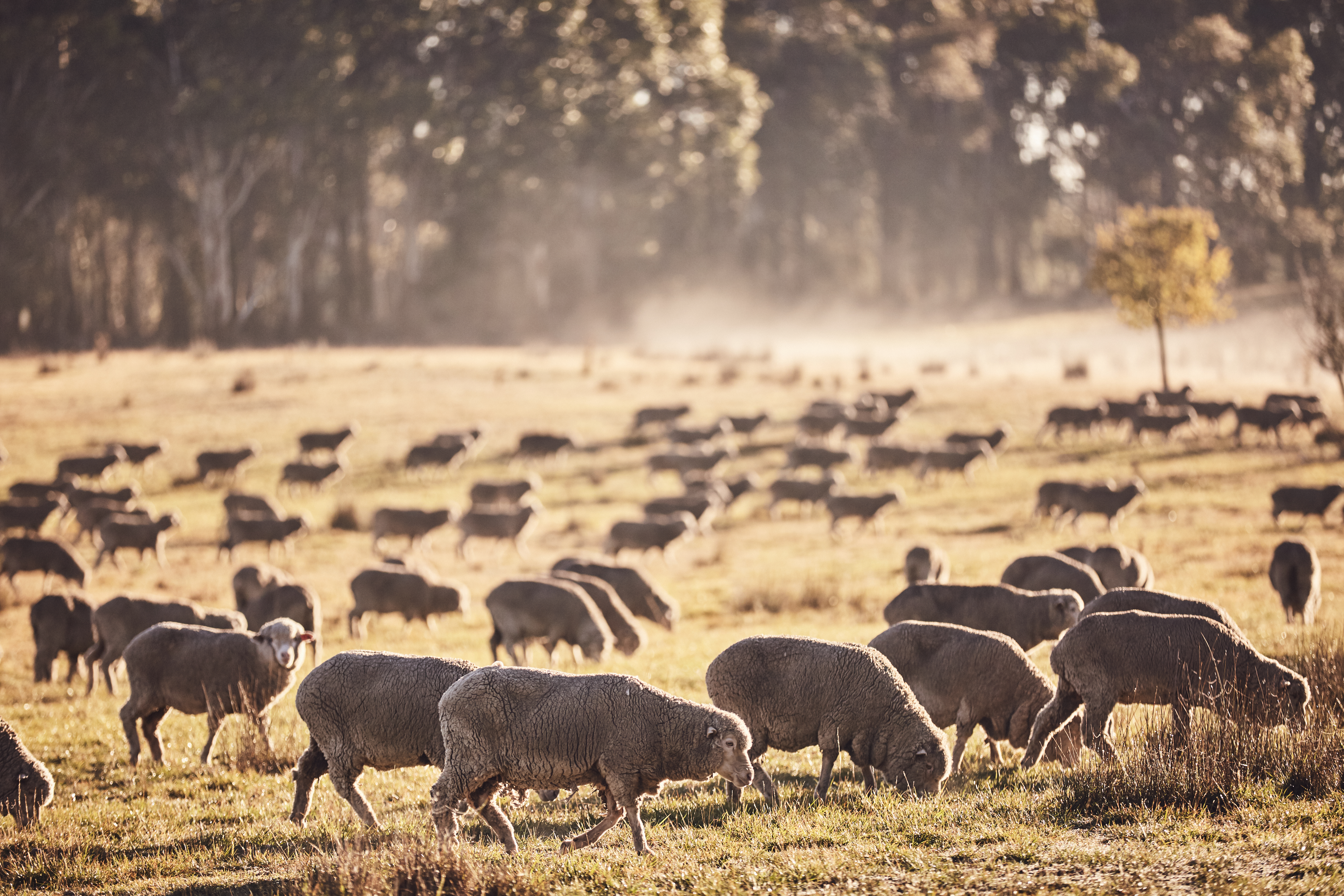Wean to manage

Best-practice weaning tips and tricks to set your weaners up to thrive, and allow your ewes sufficient recovery time before their next joining.
Weaning is one of the most critical times in the sheep reproduction calendar. A timely and well-managed weaning will set weaners up to thrive and will allow ewes sufficient recovery before their next joining.
Time of weaning
Did you know that lambs get more than 90% of their nutrients from pasture at 14-weeks of age, with less than 10% coming from milk? The general recommendation is to wean at 12- to 14-weeks from the start of lambing. However, lambs can be weaned at 8-weeks from the start of lambing, or even earlier, if they are carefully managed and provided high-quality feed. Lambs that are weaned early should have been marked, and given at least four weeks to heal if mulesed, and be at least 10 kg. Weaning earlier has many benefits, particularly in poor seasons. These benefits include:
- Preventing ewes from losing further condition, as ceasing lactation reduces their energy requirements
- Reducing the energy requirements of the ewes reduces feed costs and improves the efficiency of feed use. A 60 kg lactating ewe with a single lamb is rated at 2.9 DSE whereas these equate to about 1.7-2.2 DSE when separated.
- Allowing extra time for the ewes to regain condition before their next joining, therefore increasing their reproductive performance next year
- Allowing targeted nutrition for the weaners to optimise growth rates
- Reduced worm burdens of the lambs because they are drenched earlier and are removed from pastures being contaminated by their mothers
- Increased wool production from the ewes and lambs

An alternative to early weaning is creep feeding, where supplementary feed high in energy and protein is provided to the lambs whilst they are still with their mothers. Creep feeders enable lambs access to the feed whilst excluding the ewes. Find more information from DPIRD here.
Imprint feed before weaning
Imprint feeding encourages lambs to readily eat supplementary feed after they are weaned. This is an important tactic when weaning early but is a useful tactic even if you don't plan on supplementary feeding for some time as the weaners will remember for years.
Imprint feeding requires ewes and lambs to be supplementary fed at least four times in the two weeks leading into weaning, allowing the ewes to teach the lambs to eat the grain or pellets. Use the method of feeding (self-feeders or trail feeding) and type of supplementary feed that weaners will be provided with. For example, feed them lupins and oats if you intend to feed lupins and oats in the future.
If weaners haven't been taught to eat supplementary feed before weaning it can take them a few weeks to become accustomed. This puts them at risk of poor growth rates while they adapt.
Best-practice management of lambs
The target weight of lambs at weaning is at least 45% of their standard reference weight. The standard reference weight is the weight of a mature, dry, shorn sheep in condition score 3. If you don’t know what the standard reference weight is for your flock, you can calculate it using the steps described here.
The target growth rate for weaners is at least 50g/hd/day or 1.5 kg/month. Small increases in weaning weight and growth rates post-weaning significantly improve weaner survival. For example, a 14 kg weaner has a 34% lower mortality risk than a 12 kg weaner whereas a 20 kg weaner has a 22% lower mortality risk than an 18 kg weaner. An increase in growth rate of 0.25-0.5kg/month can reduce the risk of mortality by 74%. Hence, lighter lambs (the ‘tail’) should be drafted out at weaning for preferential feeding. Weigh weaners at weaning and then monitor the weight of a subset of 50 weaners at least every 4 to 6 weeks after weaning to ensure that the target growth rate is being achieved. Target weights and growth rates for your weaners can be set using the Winning With Weaners feed budget tables. Weights and growth rates must be closely monitored if lambs are weaned early.
Weaners should be allocated to paddocks with:
- High-quality feed
- Aim for improved pastures with 20% legume. Alternatively, lambs can be weaned onto good-quality stubbles or fodder crops. Supplementary feeding rates can be calculated using this feed budget tool.
- Low worm-risk
- Find information on preparing low worm-risk paddocks on the Paraboss website here
- Good quality water and preferably multiple watering points in large paddocks
- Limited grass seeds
Weaners are more susceptible to disease as their immune systems are still developing. Optimising weaner health includes vaccinating at marking and providing the required boosters at weaning, monitoring for flystrike and ensuring that they are free from lice. Lambs born in winter/spring in moderate to high rainfall areas should always be given an effective drench at weaning. For lambs born later in spring that are drenched at marking, a worm egg count should be conducted at weaning to determine if they require drenching. A worm egg count should be conducted 6-weeks after the weaning drench for weaners in the medium to high rainfall regions of southwestern WA unless this coincides with the timing of their summer drench. Find further information on worm control specific to your region and time of lambing at this Paraboss webpage.
Best-practice management of ewes
Ewes should be condition scored at weaning to separate ewes in poorer condition and allocate them to paddocks with better quality feed and/or prioritise supplementary feeding. Conduct a feed budget and monitor ewe condition score to ensure you are on-track to reach your targets for joining. The general target condition score for joining is ≥3. Check out the LifetimeWool website for condition score targets for your region and time of lambing.
In higher rainfall regions, a worm egg count should be conducted on ewes at weaning or 6- to 8-weeks after marking if you are weaning later than 14-weeks. In lower rainfall regions, a worm egg count should be conducted at weaning if more than 10% of ewes are scouring, otherwise test ewes just before harvest. Find more at this Paraboss webpage.
Length of joining
It is recommended that ewes be joined for no longer than 5-weeks to optimise weaning management. Shorter joining periods reduce the variation in lamb age and weight at weaning and hence reduce the risk of a ‘tail’ in the mob. Delaying weaning for later lambs can increase worm burdens and cause ewes and lambs to lose weight. For later lambing flocks, these later lambs are lighter heading into summer and tend to have poorer survival. Longer joining periods also mean that ewes have less time to recover before their next joining which may compromise their reproductive performance next year. If you currently join for longer than 5-weeks, a shorter joining period is something to consider before you next join your ewes.
Where to go for more:
- AWI’s Winning With Weaners workshop and resources on best-practice management at weaning - Let us know if you would like to attend a Winning With Weaners workshop by emailing Georgia at georgia@awiextensionwa.com
- The Yarn podcast episode where Megan Rogers, AWI Extension NSW, speaks with two woolgrowers about the benefits of tweaking their weaner management.
- Making More From Sheep website
- DPIRD website with information on early weaning of lambs in a poor season
Amy Lockwood, AWI Extension WA








